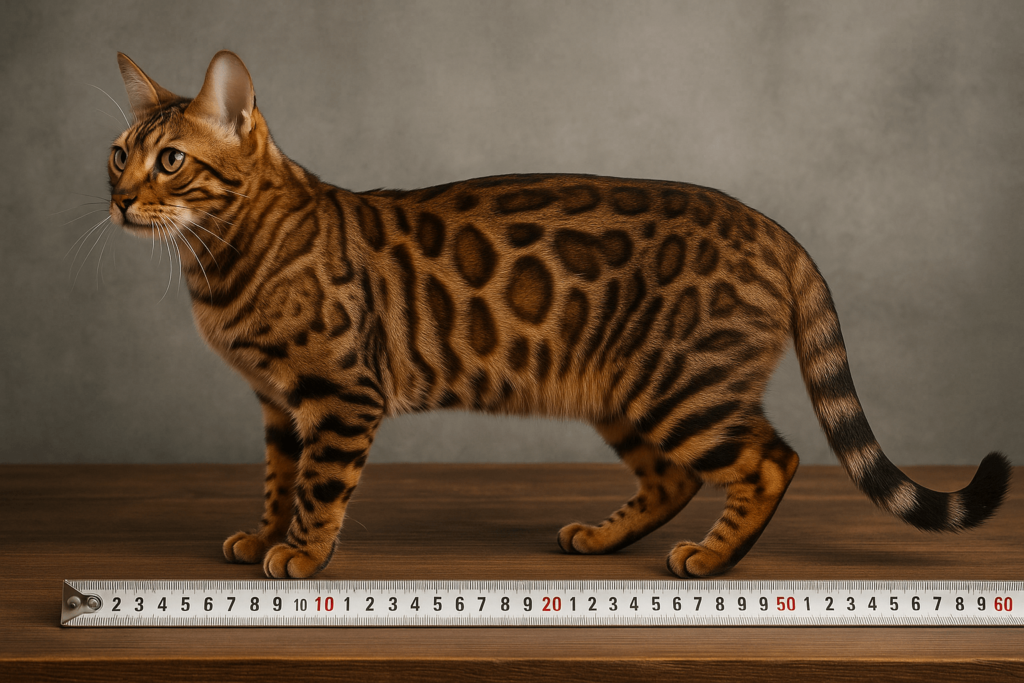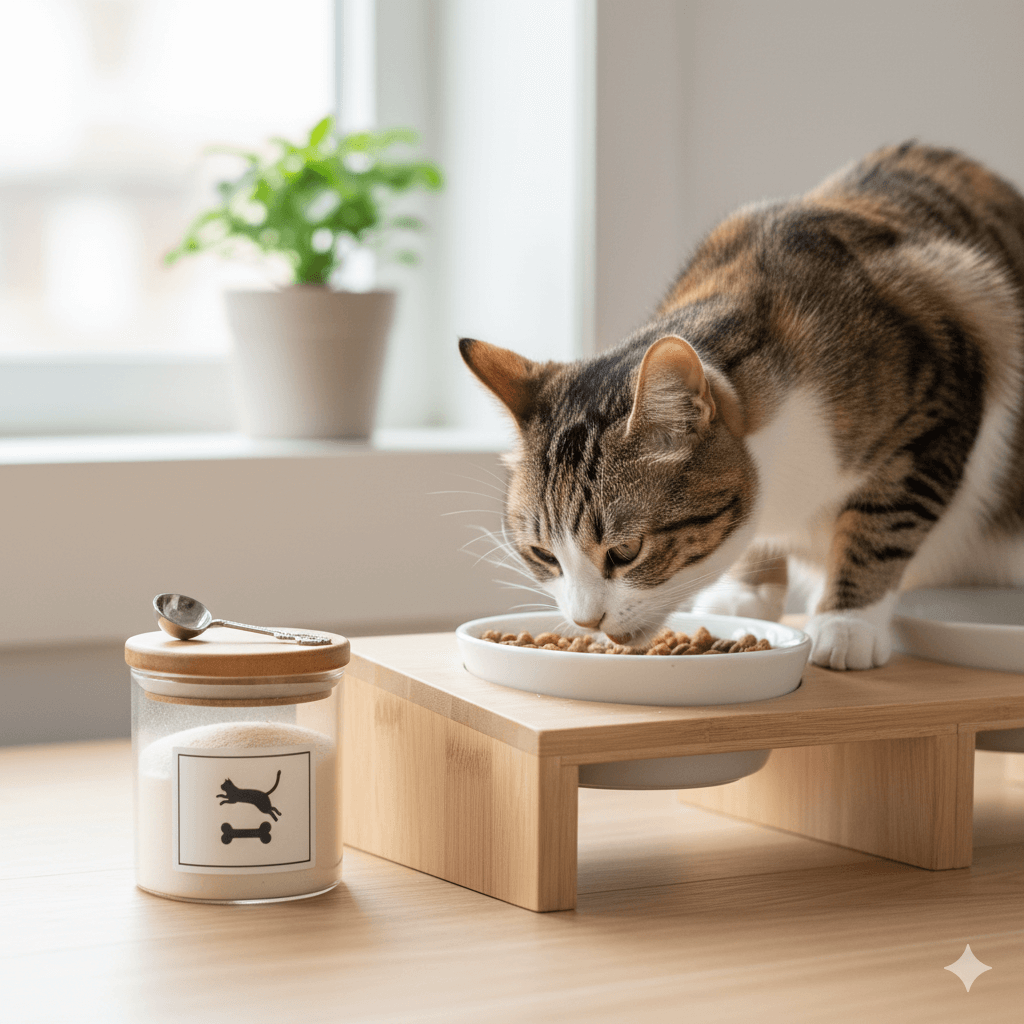Bengal Cat Size: What to Expect and How It Compares
The Bengal cat is a striking breed known for its wild appearance, playful personality, and athletic build. One of the most common questions potential owners ask is about their size—how big do Bengal cats get, and how does their size compare to other domestic breeds? Understanding the average size of Bengal cats can help you prepare for their unique needs and ensure they thrive in your home. Whether you’re considering adopting one or simply curious about this majestic breed, let’s dive into everything you need to know about Bengal cat size and what it means for their care.
Average Size of Bengal Cats
Bengal cats are medium to large-sized felines, but their exact dimensions can vary depending on genetics, gender, and overall health. Here’s a breakdown of what to expect when it comes to their size.
Height:
Bengal cats typically stand between 10 to 16 inches (25 to 40 cm) tall at the shoulder, making them slightly taller than many domestic breeds.Weight Range for Males:
Male Bengals usually weigh between 10 to 15 pounds (4.5 to 7 kg), though some larger individuals may reach up to 18 pounds (8 kg).Weight Range for Females:
Female Bengals are generally smaller, weighing between 8 to 12 pounds (3.5 to 5.5 kg), with rare exceptions reaching higher weights.Body Length:
From nose to tail tip, Bengals measure around 30 to 40 inches (76 to 102 cm), with their long tails contributing significantly to their overall length.Muscular Build:
Despite their sleek appearance, Bengals have a robust and muscular frame that adds to their athletic prowess and agility.
These measurements highlight the impressive yet manageable size of Bengal cats, making them a great fit for active households.

Factors That Influence Bengal Cat Size
Several factors play a role in determining the final size of a Bengal cat. Understanding these influences can help you better predict how large your Bengal might grow.
Genetics:
A Bengal’s lineage plays a significant role in its size. Kittens from larger parents are more likely to inherit similar traits.Gender Differences:
As with most cat breeds, males tend to be larger and heavier than females due to hormonal and biological differences.Nutrition During Growth:
Proper nutrition during kittenhood is crucial for healthy development. Poor diet can stunt growth and lead to long-term health issues.Activity Level:
Bengals are highly energetic cats, and regular exercise helps maintain muscle tone and prevents obesity, which can affect their size.Health Conditions:
Certain medical conditions, such as hypothyroidism or obesity, can impact a Bengal’s growth or weight over time.
By considering these factors, you can ensure your Bengal reaches its full potential while staying happy and healthy.
Check this guide 👉Bengal Cat Health Problems: Best 7 Expert Tips!
Check this guide 👉Bengal Cat vs Maine Coon: Best 7 Expert Tips!
Check this guide 👉Tuxedo Bengal Cat: Best 7 Expert Tips!
Male Bengal Cat Size | Female Bengal Cat Size |
|---|---|
Height: 12-16 inches (30-40 cm) | Height: 10-14 inches (25-35 cm) |
Weight: 10-15 lbs (4.5-7 kg) | Weight: 8-12 lbs (3.5-5.5 kg) |
Longer body and tail | Slightly shorter body |
More muscular build | Leaner but still athletic |
Reaches full size by 18-24 months | Reaches full size by 12-18 months |
How to Care for Your Bengal Cat Based on Their Size
Caring for a Bengal cat involves understanding their unique needs related to their size and energy levels. Here are some practical tips to keep them happy and healthy.
Provide Adequate Space:
Bengals are active and love to explore. Ensure they have enough room to roam, climb, and play indoors or in a secure outdoor area.Invest in Sturdy Furniture:
Due to their strength and agility, Bengals may accidentally damage lightweight furniture. Opt for durable pieces that can withstand their antics.Choose Appropriate Toys:
Select toys that cater to their athleticism, such as interactive puzzles, feather wands, and climbing trees designed for larger cats.Monitor Food Portions:
Overfeeding can lead to obesity, especially in less active Bengals. Follow portion guidelines based on their age, size, and activity level.Regular Vet Check-Ups:
Routine veterinary visits help monitor their growth and detect any size-related health concerns early.
With proper care tailored to their size, your Bengal will thrive and remain an energetic companion for years to come.
Comparing Bengal Cat Size to Other Breeds
When considering Bengal cats, it’s helpful to compare their size to other popular breeds to gauge whether they’re the right fit for your lifestyle.
Maine Coon:
Maine Coons are significantly larger, often weighing up to 25 pounds (11 kg) and measuring over 40 inches (102 cm) in length.Siamese Cats:
Siamese cats are slender and lighter, typically weighing between 6 to 12 pounds (2.7 to 5.5 kg), making them smaller than Bengals.British Shorthair:
British Shorthairs are stockier and heavier, ranging from 9 to 18 pounds (4 to 8 kg), but lack the Bengal’s lean athleticism.Savannah Cat:
Savannah cats rival Bengals in size, with some individuals weighing up to 20 pounds (9 kg) and standing taller due to longer legs.Domestic Shorthair Mixes:
Average domestic shorthairs vary widely in size, generally falling within the 8 to 12 pound (3.5 to 5.5 kg) range, similar to female Bengals.
Understanding these comparisons helps clarify where Bengals stand among other breeds in terms of size and care requirements.
Benefits of Owning a Bengal Cat
Bengal cats offer numerous advantages beyond their striking appearance and impressive size. These benefits make them a popular choice for many cat enthusiasts.
High Energy Levels:
Their boundless energy makes them excellent companions for active families who enjoy interactive playtime.Intelligence and Trainability:
Bengals are highly intelligent and can learn tricks, commands, and even walk on a leash with proper training.Affectionate Nature:
Despite their wild looks, Bengals form strong bonds with their owners and crave attention and affection.Unique Coat Patterns:
Their distinctive spotted or marbled coats mimic those of wild leopards, adding a touch of exotic beauty to your home.Low Grooming Needs:
Thanks to their short, sleek fur, Bengals require minimal grooming compared to long-haired breeds.
These qualities make Bengals not only visually stunning but also delightful pets for the right owner.
Challenges of Caring for a Bengal Cat
While Bengals are wonderful companions, they do come with certain challenges that prospective owners should consider before adopting.
High Activity Levels Can Be Overwhelming:
Their constant need for stimulation may become exhausting for owners who prefer low-maintenance pets.Destructive Behavior When Bored:
Without sufficient mental and physical enrichment, Bengals may resort to scratching furniture or knocking items off shelves.Cost of Ownership:
High-quality food, vet care, and specialized toys can add up quickly, making Bengals a more expensive breed to maintain.Strong Prey Drive:
Their hunting instincts may lead them to chase small animals like birds or rodents, requiring supervision outdoors.Vocal Tendencies:
Bengals are known for being talkative, which some owners find charming but others may find disruptive.
Being aware of these challenges ensures you’re prepared to meet the demands of owning a Bengal cat.
Tips for Creating a Bengal-Friendly Environment
Designing a home environment that suits a Bengal cat’s size and personality is key to keeping them content and well-behaved.
Install Cat Trees and Shelves:
Vertical spaces allow Bengals to climb and perch, satisfying their instinctual need to survey their territory.Create a Play Area:
Dedicate a corner of your home to interactive toys, tunnels, and scratching posts to channel their energy productively.Secure Outdoor Spaces:
If allowing outdoor access, use catio enclosures or harness training to keep them safe while exploring.Provide Water Features:
Many Bengals enjoy playing with water, so offering shallow bowls or pet-safe fountains can entertain them.Rotate Toys Regularly:
Introducing new toys periodically keeps their environment stimulating and prevents boredom.
By catering to their natural instincts, you’ll create a harmonious living space that both you and your Bengal will love.
Frequently Asked Questions About Bengal Cat Size
How big do Bengal cats get?
Bengals typically weigh between 8 to 15 pounds (3.5 to 7 kg) and measure 30 to 40 inches (76 to 102 cm) in length, including their tail.
Are Bengal cats bigger than normal cats?
Yes, Bengals are slightly larger than the average domestic cat, with a more muscular and athletic build.
Do male Bengals grow bigger than females?
Yes, males are generally larger and heavier than females, with noticeable differences in height and weight.
When do Bengal cats stop growing?
Most Bengals reach their full size between 12 to 24 months of age, depending on their gender and genetics.
Can diet affect a Bengal’s size?
Absolutely! Proper nutrition during kittenhood and adulthood directly impacts their growth and overall health.
Embracing the Beauty and Size of Bengal Cats
Bengal cats are truly remarkable creatures, blending elegance, athleticism, and intelligence into a single captivating package. Their size reflects their dynamic nature, requiring thoughtful care and preparation to ensure they thrive in your home. By understanding their growth patterns, caring for their needs, and appreciating their unique qualities, you can forge a lifelong bond with these extraordinary felines. Whether you’re drawn to their leopard-like appearance or their playful demeanor, Bengal cats promise endless joy and companionship for those willing to embrace their vibrant spirit.
Understanding Bone Supplement for Cats: Best 7 Expert Tips! – Safe, vet-approved guidance for strong feline bones & balanced nutrition.
Bone Supplement for Dogs: Best 7 Expert Tips! – Expert guide to calcium, collagen & bone health for every life stage.
Understanding Can Cats Get Sunburn: Best 7 Expert Tips! – Protect your feline from UV damage with vet-backed prevention strategies.
How to Train a Seizure Alert Dog: Best 7 Expert Tips! – Learn expert-backed steps to nurture natural instincts into reliable, life-saving seizure alerts.





